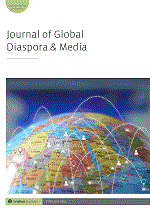
Full text loading...
 , Jul Jeonghyun Parke1
, Jul Jeonghyun Parke1
Diaspora and diasporic media have been studied consistently. As research subjects, however, their transition to, or creation on, digital platforms makes it increasingly ambiguous to distinguish digital diaspora from digital diasporic media. This study examines literature on digital diaspora and digital diasporic media and explores this ambiguity by looking at how these two research subjects have been conceptualized and methodologically approached. Referring to Candidatu, Leurs and Ponzanesi’s typology of digital diaspora research, this study concludes that the ambiguity is associated with shifting research paradigms in both internet and digital diaspora studies. The study further offers new insights that digital diaspora and digital diasporic media diverge on the projects each pursues and the nature of content each delivers, but converge on ‘media’ in the age of social media and the increasingly transcultural initiatives of these media. The study also offers the areas of further research that emerge from this ambiguity.

Article metrics loading...

Full text loading...
References


Publication Date:
https://doi.org/10.1386/gdm_00035_1 Published content will be available immediately after check-out or when it is released in case of a pre-order. Please make sure to be logged in to see all available purchase options.